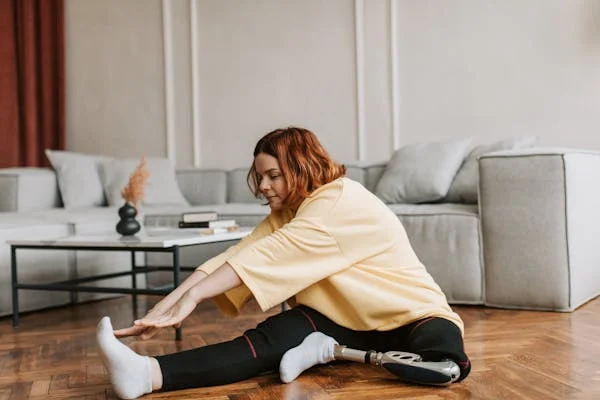Phantom limb pain is a unique and often puzzling experience for individuals who have undergone an amputation. Despite the absence of the physical limb, sensations such as pain, tingling, or pressure seem to originate from the missing part. These sensations can be mild and fleeting or intense and persistent, impacting emotional well-being and physical recovery. Overcoming phantom limb pain is an essential part of rehabilitation, as it allows individuals to focus on healing and reclaiming their independence.
This guide explores the causes of phantom limb pain, its impact, and actionable strategies to manage and reduce it effectively.
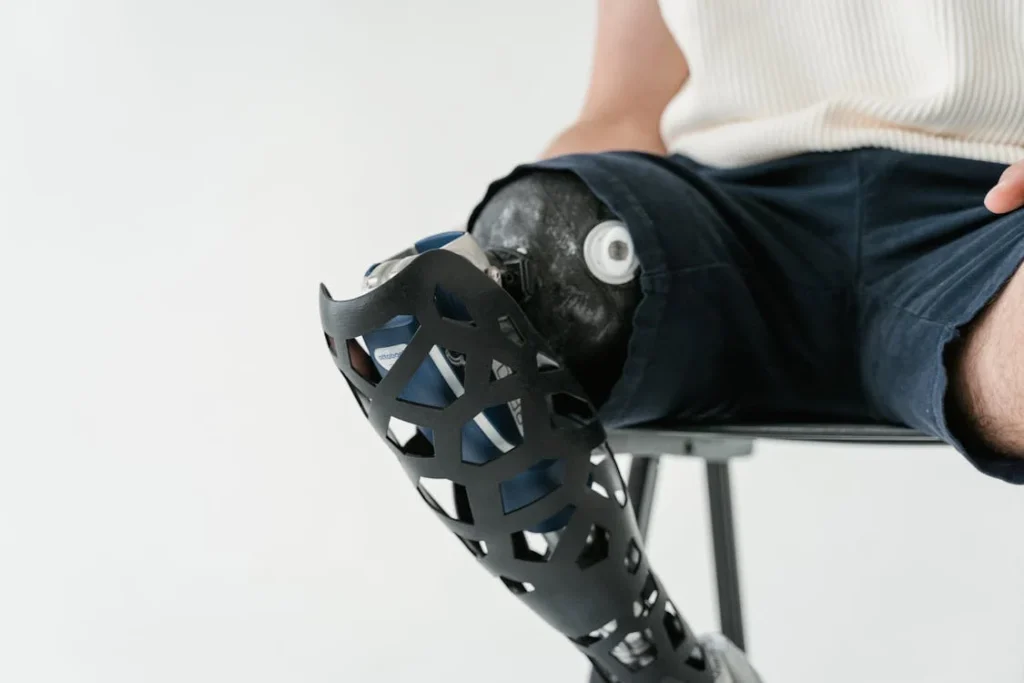
Understanding Phantom Limb Pain
Phantom limb pain is a complex and often perplexing phenomenon experienced by many individuals after an amputation. Despite the physical absence of the limb, sensations such as pain, pressure, or tingling seem to arise from the missing part.
These sensations can vary greatly in intensity, frequency, and duration, making them a unique challenge to address during rehabilitation. To manage phantom limb pain effectively, it is essential to understand its underlying mechanisms, causes, and impact on the body and mind.
The Science Behind Phantom Limb Pain
Phantom limb pain originates in the brain, where the neural networks responsible for sensory and motor functions are located. Even after a limb is amputated, the brain continues to send and receive signals to and from the area where the limb used to be.
This is because the neural pathways that once processed input from the limb remain active, creating the illusion of sensations. These signals can sometimes become misinterpreted as pain, resulting in the uncomfortable or distressing experiences associated with phantom limb pain.
This phenomenon highlights the brain’s incredible plasticity, or its ability to adapt to changes. After an amputation, the brain attempts to reorganize itself to account for the missing input.
However, this reorganization is not always smooth. When the brain encounters gaps in sensory information, it may amplify or distort signals, leading to the sensation of phantom limb pain.
How It Differs From Other Pain
Phantom limb pain is distinct from other forms of pain because it arises in a part of the body that no longer exists physically.
Unlike residual limb pain, which originates from the remaining portion of the limb, phantom limb pain is a sensory experience created entirely by the nervous system and brain.
This makes it a uniquely challenging condition to address, as traditional approaches to pain relief may not always be effective.
The quality of phantom limb pain can also vary significantly. Some individuals describe it as a sharp or stabbing pain, while others feel a burning, throbbing, or cramping sensation.
The pain may be constant or intermittent, and it can sometimes be triggered by specific events, emotions, or environmental factors. Understanding the nature of the pain is an important step in developing targeted and effective treatment strategies.
Why Phantom Limb Pain Occurs
The exact reasons why some people experience phantom limb pain while others do not are not yet fully understood. However, researchers believe several factors may contribute to its development.
The condition often involves a combination of physical, neurological, and psychological elements.
Nerve damage at the site of the amputation is thought to play a significant role. When nerves are severed during surgery, they may become hypersensitive, sending exaggerated or abnormal signals to the brain.
This can create the sensation of pain in the phantom limb. Additionally, inflammation or scar tissue in the residual limb can exacerbate these signals, further amplifying the perception of discomfort.
Emotional factors, such as stress or anxiety, may also contribute to phantom limb pain. The brain and nervous system are closely linked, and emotional states can influence how pain is perceived and processed.
For example, individuals who feel anxious or overwhelmed may notice an increase in the intensity or frequency of phantom limb sensations.
The Psychological and Emotional Dimensions
Phantom limb pain does not only affect the body—it also has a profound impact on emotional well-being. Persistent pain can lead to feelings of frustration, helplessness, or even depression, especially if it interferes with daily life or sleep.
The seemingly inexplicable nature of phantom limb pain can also create uncertainty, making it difficult for individuals to feel in control of their recovery journey.
Despite these challenges, it is important to remember that phantom limb pain is a common and treatable condition.
Acknowledging the emotional impact of the pain and seeking support from healthcare professionals, counselors, or support groups can provide reassurance and practical solutions.
The Importance of Early Intervention
Addressing phantom limb pain early in the rehabilitation process can make a significant difference in outcomes. Early intervention helps prevent the pain from becoming chronic and allows individuals to focus more fully on their physical and emotional recovery.
Therapies that target the underlying neurological and psychological factors of phantom limb pain can reduce its intensity and frequency, paving the way for a smoother and more successful rehabilitation journey.
Understanding phantom limb pain is the foundation for managing and overcoming it. By gaining insight into its causes and mechanisms, you can take proactive steps to address the condition and regain control of your life.
With the right strategies and support, it is possible to move beyond the pain and focus on the opportunities and possibilities that rehabilitation brings.
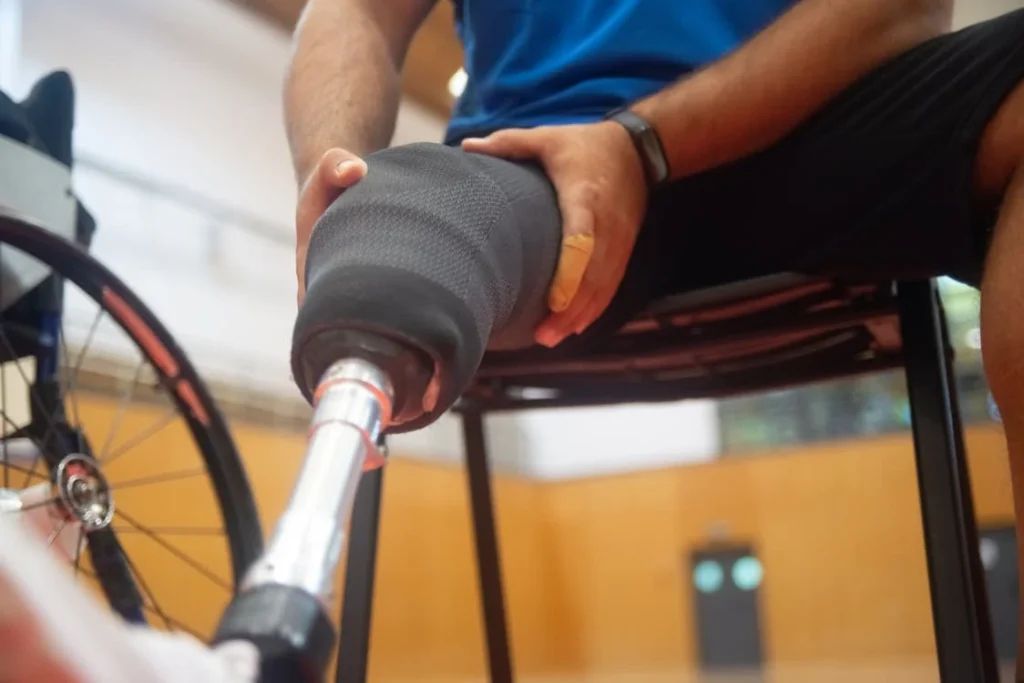
The Emotional and Physical Impact
Phantom limb pain can affect individuals in profound and multifaceted ways, influencing not only their physical well-being but also their emotional state.
This dual impact creates a unique challenge, as both the mind and body must work together to adapt to the changes brought about by amputation. Understanding and addressing these effects holistically is essential to creating a path toward healing and resilience.
The Physical Strain of Phantom Limb Pain
Phantom limb pain often manifests as sharp, throbbing, or burning sensations that feel as though they are coming from the missing limb.
These sensations can be persistent or episodic, and their unpredictability often adds to the physical strain they create. When the pain is constant, it can interfere with the body’s natural healing process, making rehabilitation more challenging.
Persistent discomfort may also lead to tension in the muscles surrounding the residual limb, as the body attempts to compensate for or react to the perceived pain.
The physical toll of phantom limb pain extends to sleep, which is crucial for recovery. Pain that flares up at night can disrupt rest, leaving individuals fatigued and less able to participate in physical therapy or other rehabilitation activities during the day.
Over time, this lack of rest can create a cycle where physical discomfort and exhaustion feed into one another, slowing progress and impacting overall well-being.
Emotional Reactions to Persistent Pain
The emotional effects of phantom limb pain are often as significant as the physical ones. Pain that seems to arise from a part of the body that no longer exists can be deeply unsettling, leading to feelings of confusion or frustration.
This sense of disconnection between the body and mind can make it difficult for individuals to feel in control of their recovery.
Many people who experience phantom limb pain also report feeling isolated, as it can be challenging to explain the condition to others.
Unlike visible injuries, phantom limb pain is internal and intangible, which may lead to misunderstandings or a lack of empathy from those unfamiliar with its effects.
This can result in feelings of loneliness or a reluctance to share the experience, further amplifying the emotional burden.
Over time, unmanaged phantom limb pain can contribute to anxiety or depression. Persistent discomfort can create a sense of hopelessness, especially if individuals feel their efforts to manage the pain are not yielding results.
Emotional distress can also heighten the perception of pain, creating a cycle where physical sensations and psychological responses reinforce one another.
The Impact on Rehabilitation
Phantom limb pain can significantly influence an individual’s ability to engage fully in rehabilitation. Pain that flares up during therapy sessions may make exercises more difficult or discourage individuals from participating consistently.
This can slow progress, leading to feelings of frustration or discouragement.
In some cases, the emotional impact of phantom limb pain may cause individuals to withdraw from the rehabilitation process altogether. They may feel overwhelmed by the dual challenge of managing their physical recovery while coping with persistent discomfort.
This highlights the importance of addressing phantom limb pain early and incorporating strategies to mitigate its effects as part of a comprehensive rehabilitation plan.
Building Resilience Through Understanding
Despite its challenges, phantom limb pain also provides an opportunity to build resilience and adaptability. Understanding the condition and its underlying causes can empower individuals to approach it with confidence rather than fear.
When individuals recognize that phantom limb pain is a common and manageable phenomenon, it becomes less intimidating, creating space for proactive solutions and positive change.
The emotional impact of phantom limb pain can also foster personal growth. Many individuals discover new reserves of strength and determination as they work through the challenges of managing their pain.
This resilience extends beyond physical recovery, shaping a mindset that embraces the broader journey of rehabilitation with optimism and perseverance.
A Holistic Approach to Recovery
Addressing the emotional and physical impact of phantom limb pain requires a holistic approach that considers the whole person.
By combining medical interventions, physical therapy, and emotional support, individuals can create a balanced strategy for managing pain and reclaiming control over their lives.
This approach not only reduces discomfort but also nurtures a sense of empowerment, reminding individuals of their ability to overcome challenges and achieve their goals.
Phantom limb pain is not just a physical condition—it is a multidimensional experience that touches every aspect of life.
By acknowledging its complexities and taking a compassionate, comprehensive approach to recovery, individuals can navigate its effects and emerge stronger, both physically and emotionally.

Strategies for Overcoming Phantom Limb Pain
Addressing phantom limb pain requires a combination of approaches tailored to the individual’s unique experiences and needs.
Because the pain is rooted in both physical and neurological processes, effective strategies often integrate therapies that target the body, mind, and nervous system.
With persistence and a comprehensive approach, individuals can significantly reduce discomfort and improve their quality of life.
Engaging in Physical Therapy
Physical therapy plays a central role in managing phantom limb pain. Therapists use targeted exercises to address nerve sensitivity, improve circulation, and reduce inflammation in the residual limb.
These exercises are often gentle and tailored to your specific needs, ensuring they provide relief without causing additional strain.For example, desensitization techniques involve gradually exposing the residual limb to different textures, pressures, or temperatures.
This helps reduce hypersensitivity and trains the nerves to respond more normally to stimuli. Over time, these methods can significantly diminish phantom sensations.
Stretching and strengthening exercises are also important. By keeping the muscles and joints around the residual limb healthy, you reduce the likelihood of pain stemming from physical imbalances or tension.
A well-conditioned body supports the brain’s efforts to adapt, making it easier to manage phantom limb pain.
Utilizing Mirror Therapy
Mirror therapy is one of the most effective and innovative treatments for phantom limb pain. It involves placing a mirror in such a way that the reflection of the intact limb appears where the missing limb would be.
When you move the intact limb, the brain perceives these movements as occurring in the phantom limb, which can “trick” it into reinterpreting pain signals.
This therapy takes advantage of the brain’s plasticity, encouraging it to reorganize its sensory map. Regular practice of mirror therapy has been shown to reduce pain intensity and frequency for many individuals.
While the technique may feel unusual at first, consistent use often leads to noticeable improvements.
Managing Stress and Emotional Well-Being
Stress and anxiety are known to amplify pain, including phantom limb pain. Addressing emotional health is a key part of managing this condition.
Relaxation techniques such as deep breathing, meditation, or progressive muscle relaxation can help calm the nervous system and reduce pain perception.
Counseling or support groups can provide additional benefits. Speaking with others who have experienced phantom limb pain can offer reassurance and practical advice, while professional counseling can help you develop coping strategies tailored to your needs.
Emotional support is an essential aspect of rehabilitation, as it fosters resilience and optimism.
Exploring Medical Interventions
In some cases, medical interventions may be necessary to manage phantom limb pain effectively. Your healthcare team may recommend medications such as nerve pain relievers, antidepressants, or anticonvulsants, depending on the nature and severity of your symptoms.
These medications work by altering the way the brain processes pain signals, providing relief for many individuals.
For more persistent or severe cases, advanced therapies such as nerve blocks or spinal cord stimulation may be considered.
These treatments target the nervous system directly, disrupting the pathways that contribute to phantom limb pain. While these options are typically reserved for individuals who have not found relief through other methods, they can be highly effective in reducing discomfort.
Incorporating Prosthetic Use
For many individuals, adapting to a prosthetic limb can help reduce phantom limb pain. The use of a prosthetic provides sensory input to the residual limb, which may help the brain adjust to its new reality.
Physical therapy sessions that focus on prosthetic use often include exercises that enhance this connection, improving both functionality and comfort.
Prosthetics designed with advanced features, such as sensory feedback systems, can be particularly beneficial. These devices simulate natural movements and provide tactile input, helping the brain create new, accurate sensory maps.
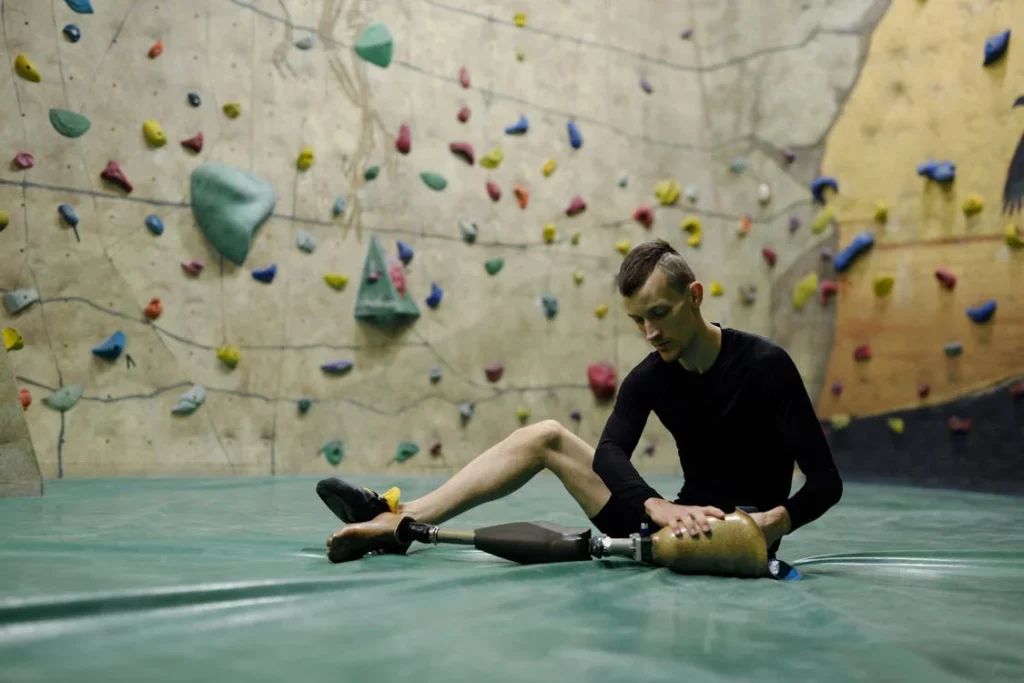
Embracing a Holistic Approach
Managing phantom limb pain requires a comprehensive approach that addresses both the physical and emotional aspects of recovery. A holistic strategy considers the entire person, focusing on creating harmony between the body, mind, and environment.
By combining medical treatments, physical therapy, mental health support, and lifestyle adjustments, individuals can achieve lasting relief and improve their overall quality of life.
Integrating Body and Mind
A holistic approach begins by recognizing the interconnectedness of the body and mind. Phantom limb pain often stems from a combination of physical and neurological factors, but emotional well-being plays an equally significant role.
Stress, anxiety, and emotional distress can intensify the perception of pain, creating a cycle that is difficult to break without addressing both components.
Mind-body techniques such as mindfulness, yoga, and meditation are powerful tools for achieving this balance. These practices encourage individuals to focus on the present moment, calming the nervous system and reducing the body’s stress response.
Over time, this helps lower the intensity of phantom limb pain and promotes a sense of control over one’s experience.
Visualization exercises can also help bridge the gap between the body and mind. By imagining the phantom limb in a pain-free state or visualizing smooth, effortless movements, individuals can influence how the brain interprets sensory signals.
This technique helps rewire neural pathways and reduces the brain’s tendency to amplify pain signals.
Fostering Physical Well-Being
The physical aspect of a holistic approach emphasizes movement, strength, and overall health.
Regular physical therapy sessions are essential for maintaining the health of the residual limb and the surrounding muscles, ensuring the body is equipped to support prosthetic use or other mobility aids.
These sessions focus not only on reducing pain but also on rebuilding strength and endurance, which can have a positive ripple effect on emotional well-being.
Nutrition also plays a crucial role in physical recovery. A balanced diet rich in anti-inflammatory foods, such as fruits, vegetables, whole grains, and lean proteins, supports the body’s natural healing processes.
Proper hydration and a focus on foods that promote nerve health can further enhance recovery and reduce discomfort associated with phantom limb pain.
Prosthetic integration is another vital element of the physical dimension. Advanced prosthetics with sensory feedback mechanisms can help the brain establish a clearer understanding of the body’s new configuration.
This reduces confusion in the sensory map and alleviates the phantom sensations that contribute to pain.
Creating a Supportive Environment
The environment in which recovery takes place has a profound impact on success. A holistic approach emphasizes the importance of fostering a supportive, stress-free atmosphere that promotes healing.
This includes creating a living space that is comfortable, accessible, and conducive to relaxation. For example, using ergonomic furniture, ensuring proper lighting, and maintaining an organized home can reduce physical strain and emotional stress.
Social support is equally vital. Engaging with loved ones, joining support groups, or connecting with peers who have undergone similar experiences can provide a sense of belonging and encouragement.
The reassurance that comes from shared understanding can help alleviate feelings of isolation or frustration, making the journey toward recovery feel more manageable.
Addressing Emotional Needs
A holistic approach acknowledges the emotional challenges of managing phantom limb pain and incorporates strategies to address these needs.
Professional counseling or therapy provides a safe space to explore feelings of grief, anger, or frustration, helping individuals process their experiences and develop coping mechanisms.
Incorporating activities that bring joy and fulfillment into daily life is another essential aspect. Pursuing hobbies, spending time in nature, or engaging in creative outlets can help shift focus away from pain and create positive associations that support overall well-being.
These activities also reinforce the idea that life after amputation can be meaningful and rewarding, despite its challenges.
The Role of Consistency and Patience
A holistic approach requires consistency and patience, as relief from phantom limb pain often develops gradually. Each element of the approach—whether physical therapy, emotional support, or lifestyle changes—builds upon the others to create a cumulative effect.
It is important to remain committed to the process, trusting that small, incremental changes will lead to significant improvements over time.
Embracing a holistic approach is not just about managing pain; it is about fostering resilience, rediscovering independence, and building a life that is both functional and fulfilling.
By addressing the full spectrum of needs—physical, emotional, and environmental—individuals can move beyond the limitations of phantom limb pain and focus on the possibilities ahead.
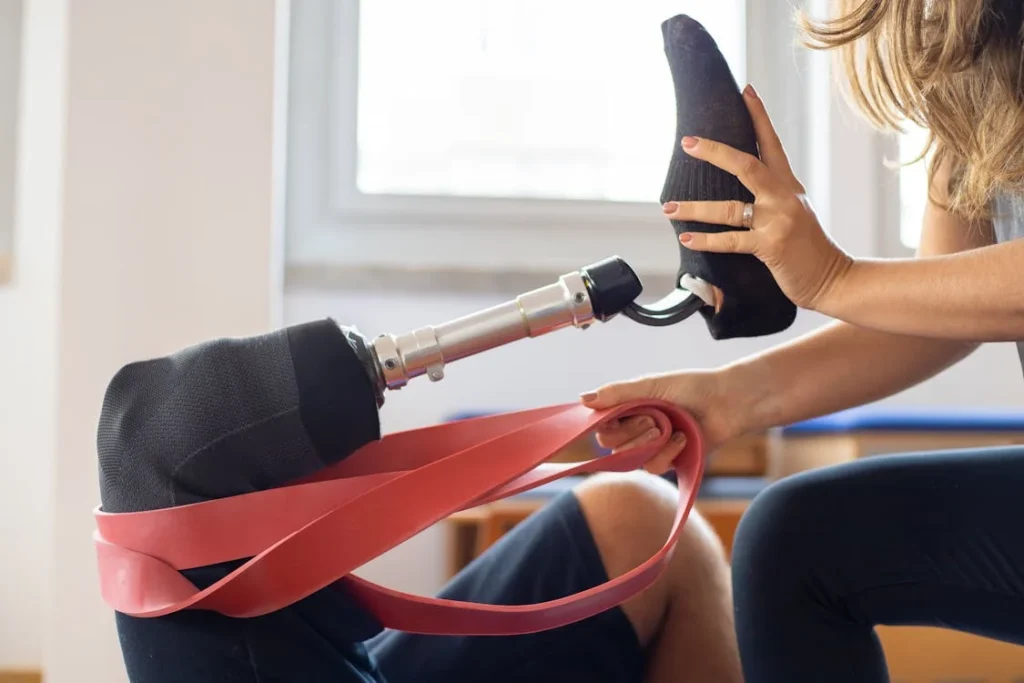
Moving Toward Relief and Independence
The journey to relief from phantom limb pain is a path of perseverance, discovery, and transformation.
For many individuals, overcoming this complex condition represents more than just managing physical sensations—it is about regaining control, fostering independence, and reclaiming a fulfilling life.
Every step toward relief is also a step toward empowerment, reminding you that healing involves both the body and the mind.
The Role of Persistence in Healing
Relief from phantom limb pain often comes gradually, requiring dedication to a range of therapies and strategies. This persistence is not just about physical repetition but also about building resilience in the face of challenges.
While the pain may not disappear overnight, each effort contributes to progress, creating a cumulative effect that brings relief closer with every passing day.
Physical therapy, for example, helps retrain the brain and body to respond more effectively to sensory input, gradually reducing the intensity and frequency of phantom sensations.
Emotional strategies, such as mindfulness or counseling, provide the tools to cope with setbacks and maintain a sense of optimism. Together, these approaches create a comprehensive plan that addresses every facet of recovery, allowing for steady improvement over time.
Redefining Independence
Moving toward independence is a deeply personal journey that looks different for everyone. For some, it might mean mastering the use of a prosthetic limb and regaining the ability to walk, write, or perform other everyday tasks.
For others, it may involve finding new ways to pursue passions or hobbies that bring joy and fulfillment. Regardless of the specifics, independence is about rediscovering the ability to live life on your terms.
Phantom limb pain can sometimes feel like a barrier to independence, especially when it interferes with daily activities or creates uncertainty about what the future holds.
However, addressing the pain through targeted therapies and holistic approaches unlocks the potential for growth and self-reliance.
Relief from pain allows individuals to focus on what truly matters—whether it’s strengthening relationships, exploring new opportunities, or simply enjoying moments of peace and contentment.
Embracing a New Normal
Life after an amputation involves adapting to a new normal, and managing phantom limb pain is an important part of that process.
While the sensations may never fully disappear for some individuals, learning to manage them effectively allows you to take charge of your experience. Instead of being defined by the pain, you become empowered to shape your life in meaningful and positive ways.
Adapting to a new normal also means recognizing and celebrating progress, no matter how small it may seem.
Every milestone achieved—whether it’s a reduction in pain intensity, greater ease in using a prosthetic, or improved emotional resilience—is a testament to your determination and growth.
These victories, though sometimes incremental, build upon one another to create a life that feels whole and rewarding.
The Power of Support and Community
Independence does not mean facing the journey alone. Support from family, friends, healthcare professionals, and peers plays a vital role in moving toward relief.
The encouragement and understanding of others provide a safety net, allowing you to take risks and embrace new challenges with confidence.
Connecting with others who have experienced similar struggles can be particularly powerful. Support groups or online communities create spaces where you can share your story, exchange advice, and draw inspiration from the achievements of others.
These connections remind you that you are not alone and that there is strength in shared experience.
Looking Ahead
As relief becomes a reality, the focus shifts from managing pain to exploring possibilities. This forward-looking mindset is crucial for building a life that feels fulfilling and independent. With each step you take, you gain a deeper understanding of your abilities, strengths, and potential.
Moving toward relief and independence is not just about what you leave behind—it is about what lies ahead. By embracing every aspect of the journey, from physical recovery to emotional growth, you create a future defined by resilience, purpose, and joy.
At Robobionics, we are committed to walking this journey with you, providing the tools and support you need to achieve relief and independence.
From advanced prosthetic solutions to personalized rehabilitation programs, our mission is to empower you every step of the way. Your path toward a pain-free and independent life is unique, and we are here to help you navigate it with confidence and hope.
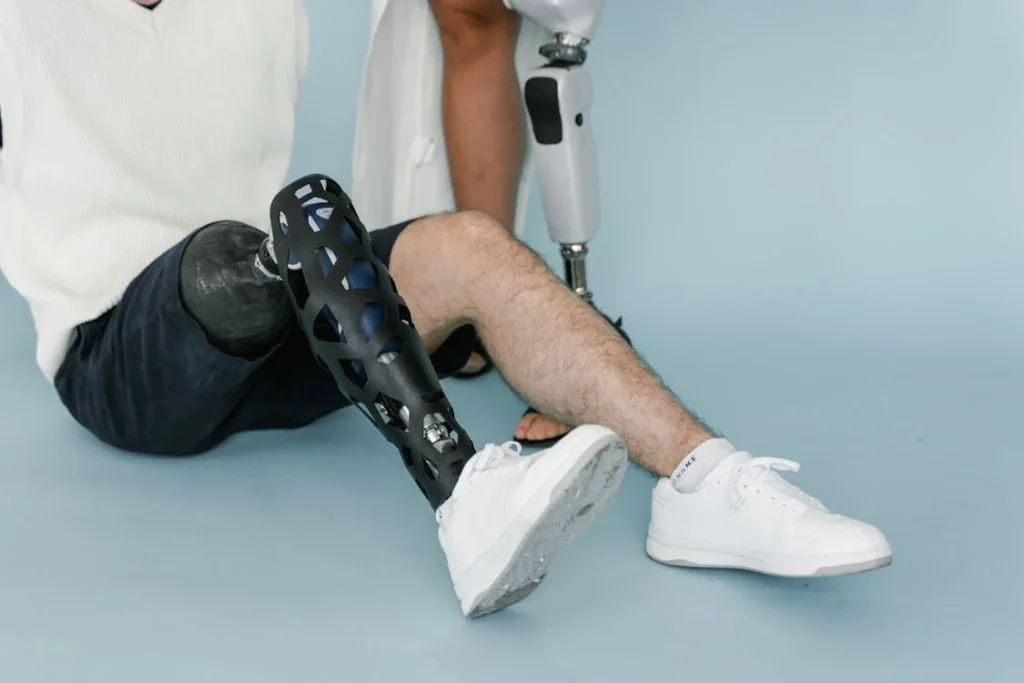
Conclusion
Phantom limb pain can feel like a daunting hurdle during rehabilitation, but it’s important to remember that it is manageable with the right strategies and support. Through a combination of physical therapy, innovative treatments like mirror therapy, stress management, and medical interventions, relief is within reach. Each step in this journey not only addresses the pain but also empowers you to regain control over your life.
Adapting to life after an amputation comes with its challenges, but overcoming phantom limb pain is a testament to your resilience and determination. With a comprehensive approach and a focus on your well-being, you can create a new sense of normalcy and independence.
At Robobionics, we’re here to help you every step of the way. From cutting-edge prosthetic solutions to personalized rehabilitation support, our mission is to ensure you have the tools and resources to thrive. Reach out to us today and take the next step toward a life free from the limitations of phantom limb pain.
Your journey toward relief is also a journey toward empowerment. Trust the process, embrace the support around you, and know that a fulfilling and active life awaits.



